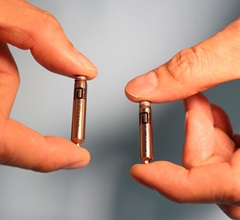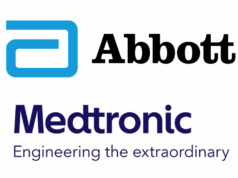
Abbott has announced that, as of 6 September, it will be rolling out its Aveir dual-chamber (DR) leadless pacemaker system across the UK. In a press release, the company claims that Aveir DR is the “world’s first” dual-chamber leadless pacing system for the treatment of abnormal or slow heart rhythms.
Owing to the fact that more than two million people in the UK currently live with arrhythmias or heart rhythm problems, and nearly 80% of people who receive a pacemaker require a dual-chamber option, Abbott further states that the latest Aveir DR system is set to “revolutionise” patient care by offering beat-to-beat communication between the two leadless pacemakers in both chambers of the heart.
Tom Wong (Royal Brompton Hospital and Harefield Hospital/Guy’s and St Thomas’ NHS Foundation Trust, London, UK)—who had been involved in early trials using this novel leadless pacing system and was the first to treat patients with the device in the UK—said: “Two individual pacemakers in constant communication with each other to provide synchronous pacing is a major leap forward in pacing technology for our patients, especially for those who have complex heart disorders. We will be able to offer a unique, potentially lifesaving treatment option to our patients, who will be at a reduced risk of future complications.”
Unlike traditional pacemakers, leadless devices like Aveir DR are implanted directly into the heart through a minimally invasive procedure, eliminating the need for cardiac leads. This reduces patients’ exposure to potential lead- and pocket-related complications, offering a less restrictive and shorter recovery period post-implantation, according to Abbott.
Both the atrial and ventricular components of Aveir DR leadless pacemakers are roughly one-tenth of the size of a traditional pacemaker, and communicate with each other using Abbott’s proprietary implant-to-implant (i2i) technology to establish continuous, synchronised pacing between the right atrium and the right ventricle.
Abbott’s recent press release notes that i2i technology utilises high-frequency pulses that relay messages via the naturally conductive characteristics of the body’s blood, providing a “groundbreaking” solution that enables beat-to-beat communication between the two leadless pacemakers. Conducted communication is critical as it uses far less battery current than inductive, radiofrequency or Bluetooth communication, the company further claims.
Aveir leadless pacemakers are also engineered to be retrieved should a person’s therapy needs change, or if a replacement device is required in the future.
Ross Campbell, Abbott’s general manager, Cardiac Rhythm Management for UK and Ireland, said: “The seamless synchronisation of the two leadless pacemakers in Abbott’s Aveir dual-chamber system is a significant project we’ve worked hard to engineer. By offering this effective treatment option in the UK, we hope to significantly improve the lives of those living with irregular heart rhythms across the country.”









